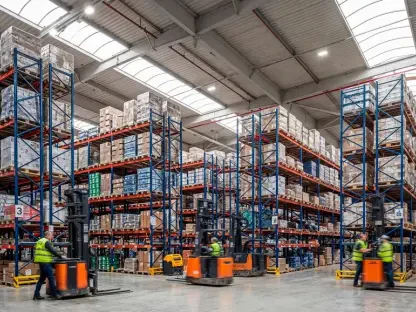The vast and intricate landscape of eCommerce presents opportunities but also harbors challenges that can transform into chaos, particularly in fulfillment operations. Modern eCommerce platforms are consistently plagued by the issue of poor visibility in customer service, resulting in negative ramifications for fulfillment processes. With a surge in omnichannel brands vying for consumer attention, maintaining seamless operations has never been more crucial. This challenge is compounded by statistics that underscore its severity; among thousands of customer service tickets analyzed, a staggering 78% pertain to order-related queries or issues. These issues encompass everything from inventory transfers to custom orders and returns. The problem escalates dramatically during Q4, a high-demand season, highlighting the need for efficient and clear solutions. Understanding these dynamics is essential for any eCommerce retailer aiming to minimize fulfillment chaos and ensure their service remains lauded rather than criticized.
The Impact of Poor Visibility in Order Management
Visibility struggles in eCommerce have a profound impact on fulfillment operations. Frustrations mount as inventory inaccuracies and delays in the shipping process lead to increased inquiries from customers. Poor visibility manifests through stockouts, delayed deliveries, and inaccuracies in order tracking, each contributing to the chaos experienced by both buyers and brands. Omnichannel retailers, noted for selling across multiple platforms, find themselves at a disadvantage when they lack comprehensive insights into their operations. Managing inventory and synchronizing orders across various channels necessitates advanced solutions that enhance visibility and reduce the likelihood of operational hiccups. The annual analysis by leading providers further underscores these challenges, showing a heavy concentration of customer service tickets during peak seasons when visibility is most crucial. In sectors like Health and Beauty, batch control becomes even more complex, amplifying the need for precise and efficient management techniques.
ECommerce brands often witness fulfillment nightmares primarily due to deficiencies in technological integration, which directly affects their service reliability. The inefficiencies create a cycle of complaints that revolve around WISMO (Where Is My Order) and WISMR (Where Is My Return) queries. Customer service teams, faced with a barrage of repetitive requests, struggle to address more complex issues due to their stretched capacities. Investing in technology that enhances visibility can pivotally transform these operations. Real-time tracking, shipping automations, and inventory management systems can dramatically reduce these queries, fostering a more autonomous, self-service environment for customers. By relieving customer service teams of mundane tasks, businesses free up resources that can tackle intricate concerns, ultimately providing a more robust and satisfactory customer experience.
Integrating Advanced Technology Solutions
With challenges well-defined, the integration of technology stands out as a transformative solution to eCommerce fulfillment chaos. Prominent technologies such as real-time tracking systems can significantly mitigate disruptions by ensuring seamless inventory management and precise shipping estimates. Automation tools empower brands by reducing manual errors and accelerating response times. These advancements not only optimize operational flow but also fortify the relationship between retailers and their customers. Austin Waddecar, a notable figure in product management, emphasizes the importance of these innovations. By implementing such technologies, eCommerce entities can eliminate stockouts, streamline processes, and offer timely responses, leading to an enhanced fulfillment rate. Furthermore, technology can act as a catalyst, equipping brands to effortlessly navigate global expansions.
Investment in technology goes beyond simply alleviating order-related issues; it proactively addresses potential pitfalls before they manifest. Advanced inventory management systems provide automatic updates on stock levels, ensuring retailers never face dire shortages. Shipping automation innovates routes and methods for delivery, guaranteeing efficiency. These technological shifts not only reduce customer complaints but empower brands to be competitive in international markets. Embracing these technologies necessitates a holistic approach, considering both the immediate operational benefits and strategic growth opportunities. Retailers recognizing the potential of these systems can capitalize on them, transforming their fulfillment operations from a source of stress to a model of efficiency.
Steps Forward for eCommerce Retailers
Navigating the complex world of eCommerce offers myriad opportunities but also presents challenges that can lead to upheaval, especially in fulfillment operations. Despite advancements in modern platforms, visibility issues in customer service remain prevalent, adversely affecting fulfillment. With an increase in omnichannel brands competing for consumer focus, streamlined operations have become indispensable. This urgency is reinforced by statistics revealing that an astonishing 78% of customer service tickets involve order-related concerns, from inventory management to custom orders and returns. During the peak Q4 season, these challenges intensify as demand surges, underscoring the necessity for robust, clear solutions. Grasping these dynamics is crucial for any eCommerce retailer striving to streamline their fulfillment processes. Achieving efficiency and clarity not only minimizes chaos but also ensures the service retains its reputation for excellence instead of being criticized.









